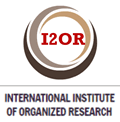Behavior of acute myocardial infarction in intensive care cardiology wards during a one-year period
Keywords:
myocardial infarction/mortality, coronary care unitsAbstract
Introduction: cardiac deaths are ranked first in developed countries and in Cuba too; the acute myocardial infarction is the one with greater morbidity. Objective: The present research aims to know the behavior of patients with acute myocardial infarction during admission. Method: a retrospective cross-sectional study with 246 patients admitted with the diagnosis of acute myocardial infarction was conducted at the Cardiology Intensive Care Unit of the Arnaldo Milian Castro Provincial University Hospital in 2010. The epidemiological characteristics, topographies, complications, treatment and mortality were described. Results: acute myocardial infarction was more common in males (169 patients versus 77 women) with a higher incidence after 46 years of age and in white patients (223). Overall mortality was 13%, in females it was 14.3% versus 12.4% males and increased progressively with age. A greater number of acute myocardial infarction was found with ST-segment elevation. The topographic location more commonly found was the inferior, with 72 patients, and the most lethal was the extensive anterior location (42.3%). The failure of Killip-Kimbal pumps II and III, atrioventricular block and ventricular fibrillation with 38, 23 and 22 patients respectively were the most common complications. Thrombolysis was performed in 48.3% of patients, anticoagulation in 96.7%, inhibitors of angiotensin-converting enzyme in 85%, aspirin in 81.3% and beta-blockers in 50% of paients. Conclusions: Acute myocardial infarction was more common in men, in white patients, and its incidence increased with age. The inferior location presented the highest incidence. Mortality was higher in women, in patients older than 75 years and in the most extensive infarctions. The most frequent complications were acute left ventricular dysfunction (Killip-Kimbal II and III), atrioventricular block and ventricular fibrillation. The most lethal ones were cardiogenic shock, cardiac rupture, and association with strokes. Thrombolysis had an acceptable use, a poor use of interventional therapy was linked to the use of beta-blockers, aspirin, anticoagulation and inhibitors of angiotensin converting enzyme.Downloads
Downloads
How to Cite
Issue
Section
License
Authors who have publications with this journal agree to the following terms:
- Authors will retain their copyright and assign to the journal the right of first publication of their work, which will simultaneously be subject to a Creative Commons License / Attribution-Noncommercial 4.0 International (CC BY-NC 4.0) that allows third parties to share the work as long as its author and first publication in this journal are indicated.
- Authors may adopt other non-exclusive license agreements for distribution of the published version of the work (e.g., depositing it in an institutional repository or publishing it in a monographic volume) as long as the initial publication in this journal is indicated.
- Authors are allowed and encouraged to disseminate their work through the Internet (e.g., in institutional telematic archives or on their web page) before and during the submission process, which can produce interesting exchanges and increase citations of the published work. (See The effect of open access).





 january 1, 2026
january 1, 2026


